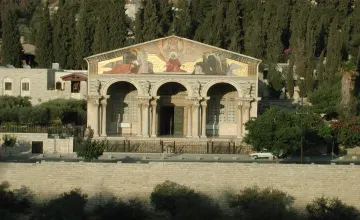Kerem HaTeimanim – one of the oldest neighborhoods of Tel Aviv and a must visit!
Attractions travel guideKerem HaTeimanim, also known as the Yemenite Vineyard, is one of the oldest neighborhoods in Tel Aviv. Located in the southern part of the city, it is named after the Yemenite Jews who immigrated to Israel and settled there in the late 19th century. The neighborhood is known for its winding alleys, stone houses, and authentic Yemenite cuisine.
For travelers looking to experience the local culture and history of Tel Aviv, Kerem HaTeimanim is a must-visit destination. Here are some of the top things to see and do in the neighborhood:
Visit the Carmel Market – Located on the edge of Kerem Hatimen, the Carmel Market is one of the largest and most vibrant markets in Tel Aviv. It’s a great place to sample local foods and buy souvenirs.
Try Yemenite cuisine – Kerem HaTeimanim is famous for its Yemenite food, which includes dishes such as jachnun, malawach, and kubaneh. You can find some of the best Yemenite food in the area at the famous Shlomo and Doron restaurant.
Explore the neighborhood’s history – Kerem HaTeimanim has a rich history, and you can learn more about it at the Yemenite Heritage Museum. The museum features exhibits on the history of Yemenite Jews in Israel, as well as traditional Yemenite crafts and clothing.
Enjoy the nightlife – Kerem HaTeimanim has a lively nightlife scene, with plenty of bars and clubs to choose from. Some of the best include Kuli Alma, a popular bar with live music and art exhibitions, and Alphabet, a speakeasy-style cocktail bar.
Discover one of the best fish sandwiches in Israel at the Carmel 40 St., fish stand in Tel Aviv’s Carmel Market. This hidden gem offers a perfect bun, legendary sauce, and halibut fillet that will transport you to heaven, all for just NIS 40.
Shop for local products – Kerem HaTeimanim is home to a number of small shops selling handmade products such as pottery, jewelry, and textiles. One of the most popular is Sarit Simayof, a boutique selling handmade jewelry and accessories.
If you’re planning a trip to Tel Aviv, don’t miss the chance to explore the historic neighborhood of Kerem HaTeimanim. From its winding alleys and stone houses to its rich cultural heritage and delicious food, it offers a unique glimpse into the local life and culture of Tel Aviv.
Here are some hotels that are located at the area of Kerem HaTeimanim in Tel Aviv:
THE POLI HOUSE design boutique hotel – THE POLI HOUSE is a modern design boutique hotel located in Tel Aviv, embodying the city’s eclectic culture and design, with a prime location that immerses you in the heart of the action.
65 Hotel, Rothschild Tel Aviv – offers stylish rooms and a rooftop terrace.
Brown TLV Urban Hotel – offers elegant rooms and a rooftop terrace.








